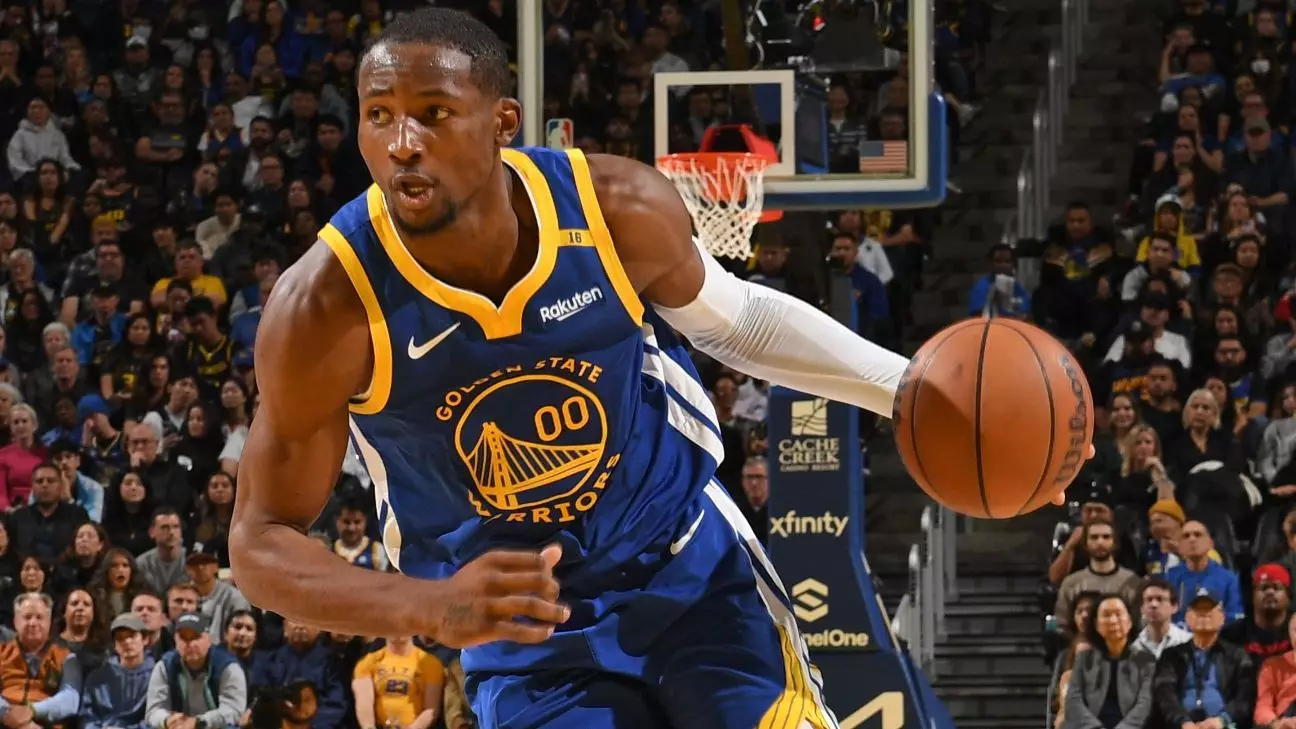In today’s high-stakes world of professional basketball, loyalty is often measured in dollars and opportunities rather than team allegiance or player development. Jonathan Kuminga’s recent stance on his contract situation with the Golden State Warriors exemplifies this shift. Instead of succumbing to conventional negotiations that tend to favor immediate financial security or a quick resolution, Kuminga is exuding a newfound confidence that could redefine his career trajectory. His refusal to accept the latest offers from the Warriors underscores a deep desire for growth, a commitment to finding the right fit, and a willingness to challenge the traditional narratives of loyalty for long-term aspirations.
Kuminga’s hesitance to sign a deal that doesn’t meet his expectations is not merely a stubborn stance but a calculated move rooted in his desire for a substantial role and recognition. The player’s camp is actively exploring sign-and-trade options, signaling a readiness to seek opportunities where his talents will be valued and utilized in a capacity that allows him to flourish. This approach veers away from the typical “sign now” mentality, emphasizing that Kuminga’s mind is focused on long-term development rather than short-term comfort. His actions could inspire a broader conversation about player agency, especially among young stars, who no longer see themselves solely as commodities but as proactive architects of their careers.
This approach also questions the fairness of the NBA’s current financial and negotiation landscape. The league’s restricted free agents face limited options because of the tight cap space and conservative team strategies, which tend to favor established veterans or those with proven track records. Kuminga’s openness to risking immediate earnings for a shot at a more prominent role challenges this status quo. His stance reflects a broader shift among emerging talents who recognize that strategic patience and self-advocacy can potentially yield better long-term outcomes than quick signings with uncertain futures.
The Impact of a Player’s Confidence on Team Dynamics and Future Opportunities
Kuminga’s reluctance to settle for a deal that doesn’t suit his aspirations signals more than just individual ambition—it could influence the team’s overall strategy and the dynamics within the Warriors’ roster. The Warriors have historically been a team that values stability, chemistry, and a collective focus on championships. An unresolved Kuminga situation, therefore, holds the potential to create friction or uncertainty within the organization, especially as they pause other offseason moves to focus on this stalemate.
However, this stand also exposes the Warriors’ strategic vulnerabilities. Their inability to finalize a deal with Kuminga reflects the broader market challenges that teams face in acquiring young, promising players in a cap-constricted environment. The Warriors see his potential and are willing to offer one of the highest starting salaries they’ve had for a player of Kuminga’s profile, yet his demands go beyond mere monetary considerations. He seeks guaranteed playing time and a more central role, signaling a maturing understanding of his value and potential contributions. This signifies a player who is no longer content to be a secondary piece but is positioning himself as a future cornerstone.
Kuminga’s pursuit of a significant role suggests a changing mindset among young NBA talents—they no longer see themselves as perpetual projects or placeholders but as franchise-building blocks. His final playoff performances, scoring impressively against Minnesota and delivering moments of excellence, demonstrate his capability to be a primary contributor. But his previous marginalization in critical moments, like being out of rotation during the Rockets series, fuels his desire to command a bigger slice of the pie. His confidence, therefore, isn’t arrogance but an assertion of his worth, which could influence how teams evaluate and develop young players moving forward.
The Strategic Lay of the Land: Warriors’ Plan and Kuminga’s Potential Role
Amidst the contractual tension, the Warriors are strategically maneuvering to maintain roster flexibility and brace for a future that might look quite different from their recent championship-winning team. Their focus on acquiring veteran shooters like Al Horford, along with bench depth options such as Seth Curry and De’Anthony Melton, indicates a clear plan to reinforce their core around established stars like Steph Curry. These acquisitions, however, hinge significantly on resolving Kuminga’s situation—he remains the biggest puzzle piece in their offseason blueprint.
Kuminga’s preference for a guaranteed starting role and featured opportunities is clear. Multiple sources indicate he’s seeking a level of trust and responsibility that the Warriors are hesitant to guarantee at this stage. His desire isn’t solely financial but rooted in the quest for relevance and impact within a team that values cohesion but also needs dynamic, young contributors to push the championship envelope. His recent playoff performances—especially his scoring bursts when Curry was sidelined—prove he has the capacity to be a key piece. Still, his past limited role and the disappointment of being sidelined in critical moments in past playoffs have likely shaped his current mindset—that he must be a primary piece to truly develop and showcase his skills.
The Warriors’ cautious approach, holding off on other roster decisions until Kuminga’s future is determined, underscores how significant his choice is to their overall strategy. This negotiation isn’t simply about a single player’s contract but about setting a tone—whether they’re willing to prioritize growth and potential over short-term stability. For Kuminga, this could be a defining moment: choosing between immediate financial security and long-term influence, or risking a fresh start elsewhere. His willingness to wait and explore other possibilities suggests he’s confident enough to challenge conventional team-building methods and assert his own value in a highly competitive environment.
While the NBA’s free agency landscape remains subdued, Kuminga’s stance signals a potential shift among young players. It’s a reminder that a player’s confidence in his abilities, combined with strategic patience, can sometimes be a catalyst for broader change. Whether this results in a new chapter with the Warriors or an entirely different destination, it’s clear that Kuminga refuses to be a passive participant in his career—an attitude that could ultimately redefine how NBA teams develop and retain their rising stars.

